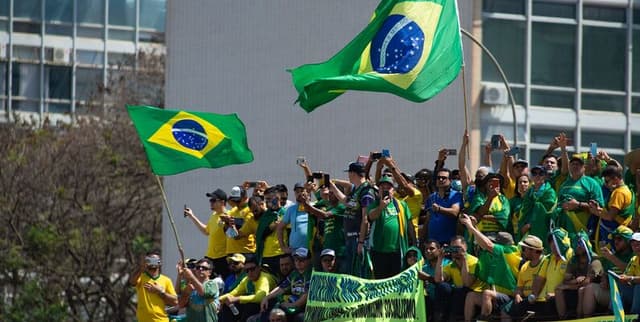Brazil Incident Tracker
Social Media and Posts
Tags and Keywords
Trusted By




"No reviews yet"
Free
About
This dataset tracks both non-violent and violent conflicts in Brazil from 2018 to early 2023. It was inspired by the January 8th invasion of Brazil's National Congress by Jair Bolsonaro supporters. The data is curated from the Armed Conflict Location & Event Data Project (ACLED), an organisation specialising in event data for disaggregated conflict analysis and crisis mapping. It offers a detailed view of conflict events across Brazil, enabling insights into political violence, social issues, and protests.
Columns
- EVENT_DATE: The day, month, and year on which a conflict event occurred.
- EVENT_TYPE: The overall classification of the conflict, such as battles or protests.
- SUB_EVENT_TYPE: A more specific classification of the conflict type, for example, armed clash or peaceful protest.
- ACTOR1: The primary named party involved in the conflict event. Common actors include Protesters (Brazil) and Unidentified Gang and/or Police Militia.
- ACTOR2: Any named party associated with or identifying ACTOR 1. Often includes Civilians (Brazil).
- COUNTRY: The nation where the conflict took place, which is exclusively Brazil in this dataset.
- LOCATION: The precise geographical place where the conflict occurred, such as Rio de Janeiro - North Zone or Manaus.
- LATITUDE: The latitudinal coordinate of the conflict location.
- LONGITUDE: The longitudinal coordinate of the conflict location.
- SOURCE_SCALE: Indicates the geographical scope of the source from which the data was gathered (e.g., local, regional, national, international). National and Subnational sources are most prevalent.
- NOTES: A brief textual description of the specific conflict event.
- FATALITIES: The reported number of deaths that resulted from the conflict event.
Distribution
The dataset is provided in CSV format and is named "Brazil Political Violence and Protests Dataset.csv". It is approximately 24.54 MB in size and contains 62,900 records across 12 columns. The data is structured in a tabular format, ideal for time series analysis.
Usage
This dataset is ideal for:
- Disaggregated conflict analysis and crisis mapping.
- Researching political violence and protest trends in Brazil.
- Analysing social issues and advocacy movements.
- Examining international relations within the context of Brazil's internal stability.
- Time series analysis of conflict patterns over time.
Coverage
The dataset covers Brazil geographically. The temporal scope ranges from 1 January 2018 to 20 January 2023. It includes various event types and sub-types, as well as a wide range of actors involved in conflicts across the country.
License
CC BY-NC-SA 4.0
Who Can Use It
- Researchers and academics: For studies on political science, sociology, criminology, and regional studies focused on Brazil.
- Policy analysts and government bodies: To monitor and understand conflict dynamics for policy development and intervention strategies.
- Journalists and media outlets: For reporting on current events, social unrest, and political developments in Brazil.
- Non-governmental organisations (NGOs): For humanitarian aid, peacebuilding efforts, and human rights advocacy.
- Data scientists and analysts: For advanced statistical modelling and visualisations of conflict data.
Dataset Name Suggestions
- Brazil Conflict & Protest Data (2018-2023)
- Brazilian Political Violence and Protests
- Brazil Incident Tracker
- ACLED Brazil Conflict Events
Attributes
Original Data Source: Brazil Incident Tracker
Loading...
Free
Download Dataset in CSV Format
Recommended Datasets
Loading recommendations...
